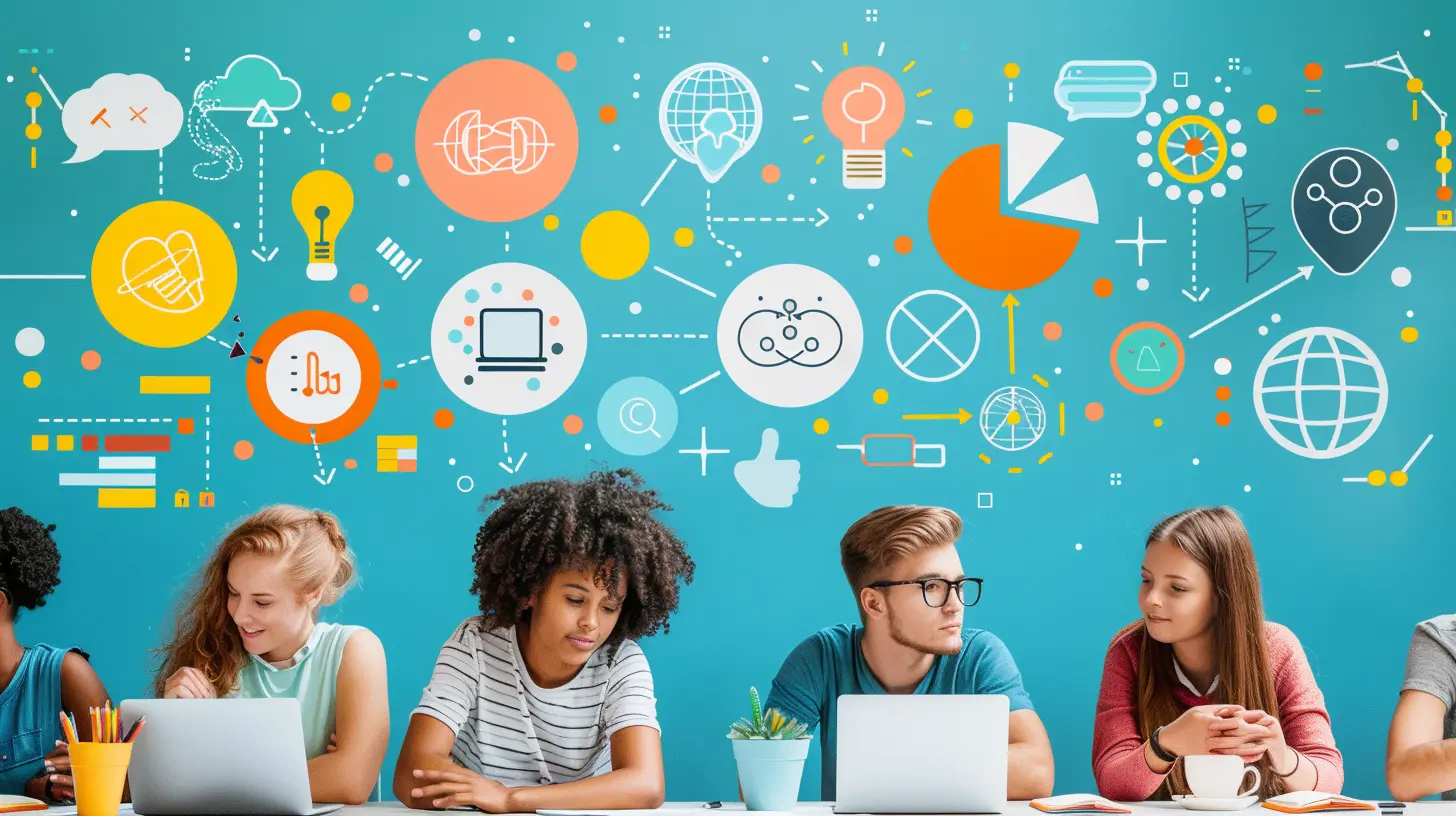Mastering the Art of Blended Learning: Strategies for Success
5 November 2025
Blended learning isn’t just a buzzword—it’s a game-changer in education. Whether you're a teacher, a student, or an education enthusiast, understanding how to make the most of blended learning can significantly impact learning outcomes. But let’s be honest—blended learning isn't always smooth sailing. It requires planning, the right tools, and a mindset that embraces both technology and traditional teaching.
So how do you master the art of blended learning? Let’s break it down.

What Is Blended Learning, Anyway?
Blended learning is exactly what it sounds like—a blend of online and face-to-face learning. It combines traditional classroom instruction with digital tools, creating a more interactive and flexible learning experience. Instead of choosing between in-person and online instruction, blended learning gives you the best of both worlds.But here’s the catch: simply throwing in some tech doesn’t make learning “blended.” The key is to integrate technology in a way that enhances learning rather than just replacing traditional teaching.

Why Blended Learning Matters
So why should anyone care about blended learning? Here’s why:- Flexibility: It allows students to learn at their own pace while still benefiting from in-person guidance.
- Engagement: Interactive digital tools make learning more dynamic and interesting.
- Personalization: Students get a mix of independent and guided learning tailored to their needs.
- Skill Development: Beyond academic knowledge, students develop digital literacy, problem-solving, and self-discipline.
Now that we know why blended learning is important, let’s dive into strategies to make it work effectively.

Strategies for Blended Learning Success
1. Start With a Clear Plan
Jumping into blended learning without a clear strategy is like setting out on a road trip without a map. You need a plan.- Define your learning objectives. What should students achieve by the end?
- Choose the right mix of online and offline activities.
- Set expectations for both students and teachers so everyone knows their role.
Without a solid plan, blended learning can quickly become chaotic.
2. Choose the Right Tools
Technology is the backbone of blended learning, but not all tools are created equal. The trick is to use platforms that actually enhance learning rather than just adding extra work.Some proven tools include:
- Learning Management Systems (LMS): Platforms like Google Classroom, Moodle, and Canvas help organize coursework, track progress, and facilitate communication.
- Video Conferencing Tools: Zoom, Microsoft Teams, or Google Meet make virtual interactions seamless.
- Interactive Learning Apps: Kahoot, Quizlet, and Edpuzzle keep students engaged.
- Collaboration Tools: Google Docs, Padlet, and Trello allow students to work together efficiently.
The goal? Choose tools that simplify learning, not complicate it.
3. Encourage Active Participation
One big challenge in blended learning is keeping students engaged, especially with online content. If students are just passively watching videos or reading materials, they’ll check out mentally.To prevent this, try:
- Discussion boards: Get students talking about what they’ve learned.
- Group projects: Encourage collaboration, even in a virtual space.
- Live Q&A sessions: Give students a chance to clarify doubts in real-time.
- Gamification: Add quizzes, badges, and rewards to make learning fun.
The more interactive the experience, the better the learning outcomes.
4. Balance Online and Offline Activities
A common mistake in blended learning is leaning too much toward either online or offline instruction. The magic happens when both complement each other.For example:
- Instead of a long lecture, provide video lessons online and use classroom time for discussions or hands-on activities.
- Assign digital quizzes before class to assess prior knowledge.
- Let students work on online research and present their findings in person.
Finding the right balance ensures students stay engaged in both formats.
5. Monitor Student Progress Regularly
Blended learning gives students more autonomy, but it also means they need guidance along the way. Regular check-ins help ensure no one falls behind.Ways to track progress effectively:
- Online quizzes and polls: Immediate feedback helps identify gaps in understanding.
- Analytics from LMS platforms: See how much time students are spending on assignments.
- Student reflections: Encourage learners to share their experiences and challenges.
Checking in regularly allows you to identify struggling students early and adjust accordingly.
6. Foster a Strong Sense of Community
One downside of online learning is that it can sometimes feel isolating. That’s why it’s crucial to build a strong sense of community in blended learning environments.How?
- Encourage peer interactions through group discussions and collaborative projects.
- Maintain open communication between students and teachers.
- Use virtual meetings to build personal connections, not just as lecture time.
When students feel connected, they’re more likely to stay motivated.
7. Provide Continuous Support and Feedback
Blended learning isn’t a “set it and forget it” approach. Teachers and instructors need to be actively involved in offering support and feedback.- Timely feedback on assignments keeps students on track.
- Office hours or one-on-one check-ins provide extra help for those who need it.
- Guidance on how to navigate digital tools ensures no student is left behind.
Support is key to making blended learning successful.
8. Be Adaptable and Open to Change
No matter how well you plan, things won’t always go smoothly. Tech issues, student struggles, and unexpected challenges are bound to happen.The best approach? Stay flexible and open to change.
- If a digital tool isn’t working, try something new.
- Adjust lesson plans based on student feedback.
- Keep an open mind—blended learning is a constantly evolving process.
Being adaptable makes blended learning more effective and less stressful.

The Future of Blended Learning
Blended learning isn’t just a temporary solution—it’s here to stay. As technology advances, education will continue to evolve, offering even more innovative ways to combine digital and in-person learning.Whether you're a teacher implementing blended learning in your classroom or a student adjusting to this model, mastering these strategies will help you make the most of it. Education is changing, and those who embrace blended learning will be better prepared for the future.
Ready to take blended learning to the next level? Start implementing these strategies today and see the difference they make!
all images in this post were generated using AI tools
Category:
Blended LearningAuthor:

Bethany Hudson
Discussion
rate this article
1 comments
Megan Pace
Embrace the power of blended learning! Combining traditional and digital approaches unlocks limitless potential for both educators and students. Let's transform education together!
November 9, 2025 at 5:50 AM

Bethany Hudson
Absolutely! Blended learning truly enhances engagement and success by merging the best of both worlds. Let’s revolutionize education together!


